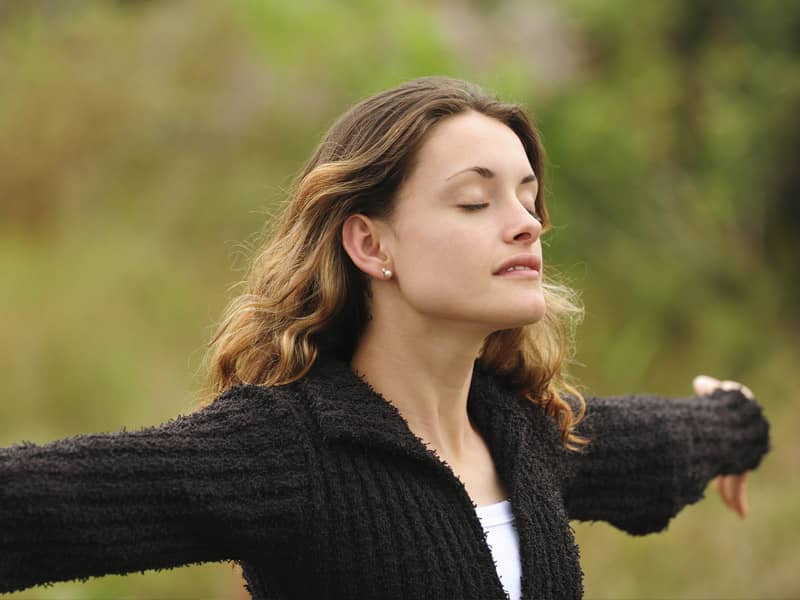You've said that bringing your children to visit their 95-year-old great-grandmother in a nursing home inspired the writing of "The Soul of the Child." What happened during that visit?
My children asked me questions about the soul-what is it, where does it go after death, how do we know we have a soul? In trying to answer their questions, I had a realization, one that perhaps became possible because of my twenty years researching both neural science and world religions, but I think became real by mysterious epiphany. Quite literally, I had a vision. It was like seeing into the point where neural science and religion meet. The vision is based, quite simply, in the realization that we now have the technology to prove the existence of the human soul.
Your epiphany seems to be that light and the soul are the same. What's the proof?
In brief, it involves what we know about light-its composition, its form, and its substance. Our new neural technologies allow us to track light as it moves in the human brain and body. Religions have told us for millennia that there is a light that cannot burn out and each of us participates in it-each of our souls is this light. The neural sciences can now prove what religions and our own intuitions have always asserted. It is in the child that the actual growth of the soul is most clear. One amazing thing that happened as I developed the proof of the soul was that I stumbled on a proof for another idea, too: that the soul and body are not split, as we've been taught, but united.
Why is it important for us to understand that soul and body are united?
Especially in the lives of children it is crucial. We live in a time of increasingly visible cases of child abuse, sexual abuse, child abandonment and neglect, lack of attachment to children, children at risk. If the soul of the child is unrealized, then the child is "just a kid," a body to be used or forced into certain economic and social molds. If, however, there is no split of body and soul, then the child is soul, through and through. The child is the light of God, the most important asset in the universe. In "The Soul of the Child," I demonstrate how the soul, which is as much material as it is ethereal, actually grows and changes during a lifetime. And it demands our care. As a child develops, God is developing. We are caring for not only the psychological development of children, but the neuro-spiritual development of God.
Science is increasingly showing us what God is, and the place to start noticing the proof is in the child. When we apply the sciences of genetics, neurobiology, neurochemistry and many others to our everyday lives, we discover no separation of soul and body, child and divinity, self and God.
We have always thought of God as needing nothing; God has been perfect and complete, and we ourselves have been the needy ones. Science now shows us how incomplete [this concept] is. To call it the whole truth would be to see only one facet of a diamond. In point of scientific fact, God actually lives in our homes. This reality throws out the old thinking, challenging us to say, "If, indeed, God is the child, then the old notion that God needs nothing from us is false. God needs us very much." God is my child. I as a parent am, quite literally, doing divine work.
What practical thing do you suggest parents do to better care for the souls of their children?
The practical thing is attachment, not only with parents but with an organized extended family. Through the bond between adult and child, we feel how much the child--this divine material, this infinite energy of the universe that lives in our homes, schools and communities--desperately needs our love. As we attach with the child, helping the child develop and grow in love, we are actually helping God develop and grow.
Humans are group creatures. Our brains, our bodies, our souls need a lot of care. Our contemporary society is experimenting with cutting back on caregivers for children. Some children are raised through crucial stages of life by only one person. This one person, who strives to give the best, may be overwhelmed, busy, trying to raise many children. And even in homes with two parents, many children are essentially alone. When we think of children as "kids," or economic interns bred for material success, or bodies to be fed and clothed, we might not realize how many caregivers they yearn for. I suggest that each "family group"--parents and other caregivers--design an "attachment map" for the child before he or she is born, deciding on not only parents, but at least two other adults the child can attach to in a deep way.
This is the way to make sure a child gets enough love, and consequently, to decrease disorders like depression, anorexia, hyperactivity. If parents concentrate on making sure that some workable form of this "three family system"--the parents, the extended family, and the community--is in place, they will have found the fountain of practical help they need to raise happy and successful adults.

